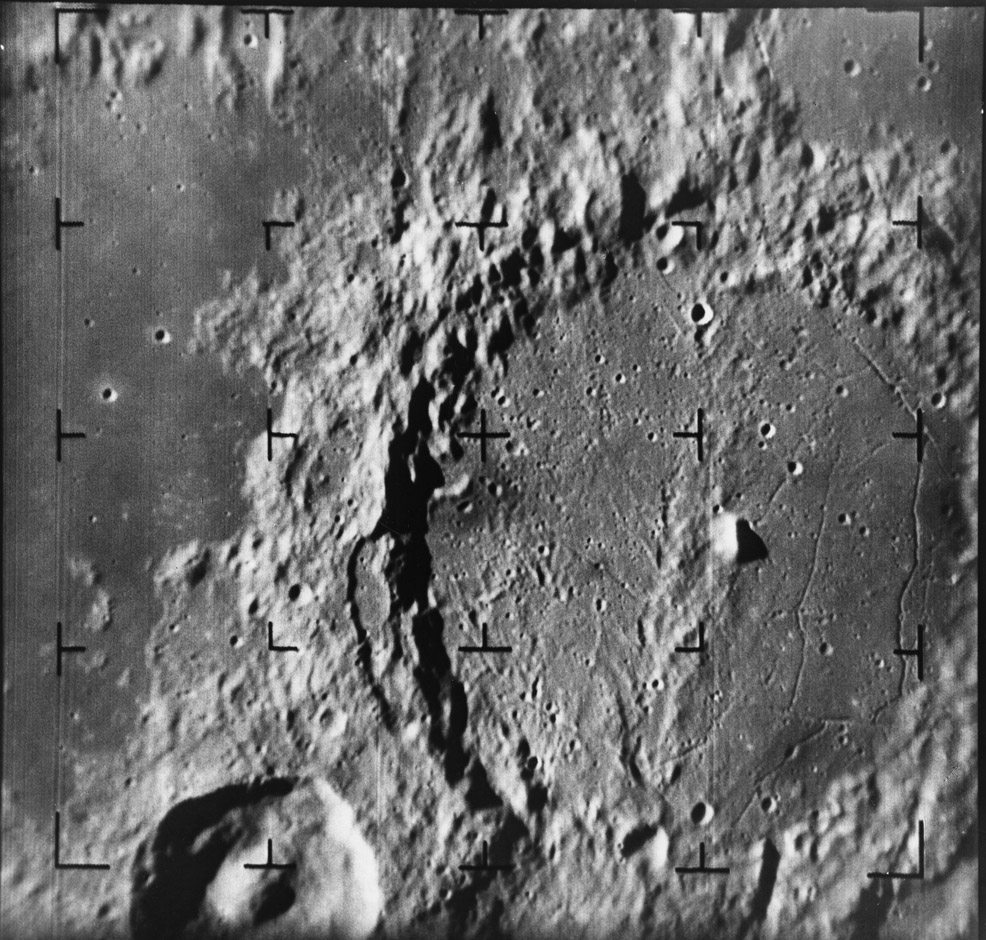Difference between revisions of "October 27, 2009"
| Line 14: | Line 14: | ||
<br /> | <br /> | ||
<strong>Related Links</strong><br /> | <strong>Related Links</strong><br /> | ||
| − | Rükl plate [https://the-moon.us/wiki/R%C3% | + | Rükl plate [https://the-moon.us/wiki/R%C3%BCkl_44 44]<br /> |
<br /> | <br /> | ||
<p><b>Yesterday's LPOD:</b> [[October 26, 2009|Wonder Rille]] </p> | <p><b>Yesterday's LPOD:</b> [[October 26, 2009|Wonder Rille]] </p> | ||
Latest revision as of 17:56, 13 October 2018
Hard Landers

Ranger 9 A043 image from Ranger Photographs of the Moon, scanned by LPI
The first contact with the Moon was Luna 2 which crashed as planned in Palus Putredinis. Spacecraft that made such planned crashes soon became known as hard landers because they had no capability for the gentle touchdown that the word landing usually implies. Luna 2 was a triumph technologically and politically, but provided little science. None of the Luna hard landers (is there a phrase hard missers, for those that totally missed the Moon, like Luna 1?) apparently did not carry cameras. Cameras were the main payload of the nine Rangers America launched towards the Moon in the mid-1960s. Like the Soviets, problems plagued the program which ultimately ended in the three successes of Rangers 7, 8 and 9. These hard landings provided wonderful series of ever-closer views of the lunar surface, with the last frames only partial, marking the instant of impact. Ranger 9 was the most dramatic - after two somewhat boring missions to maria - coming down in the eastern floor of Alphonsus, near the volcanic cinder cones called dark halo craters. And it was broadcast live on national television - now that was dramatic!
Chuck Wood
Technical Details
I heard that Alika Herring made some of the mirrors for the Ranger cameras - anyone know if that is true?
Related Links
Rükl plate 44
Yesterday's LPOD: Wonder Rille
Tomorrow's LPOD: Tall Tales
COMMENTS?
Register, Log in, and join in the comments.



